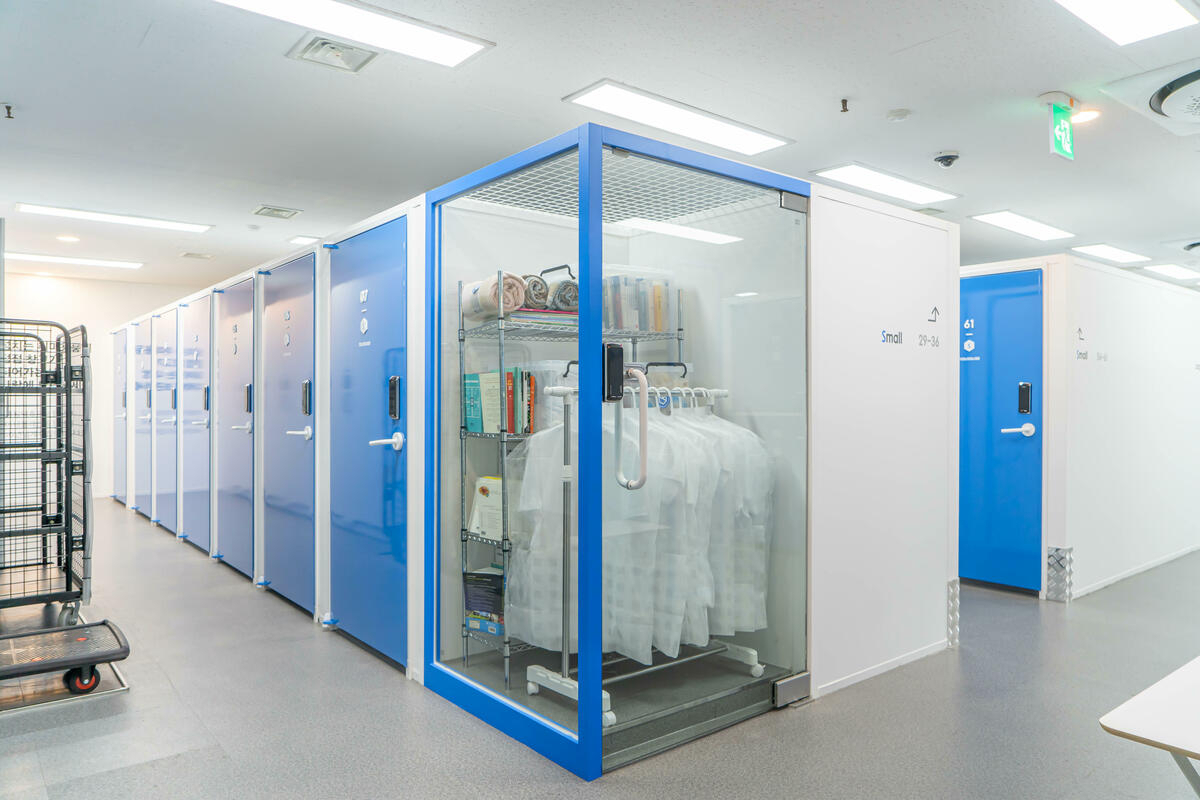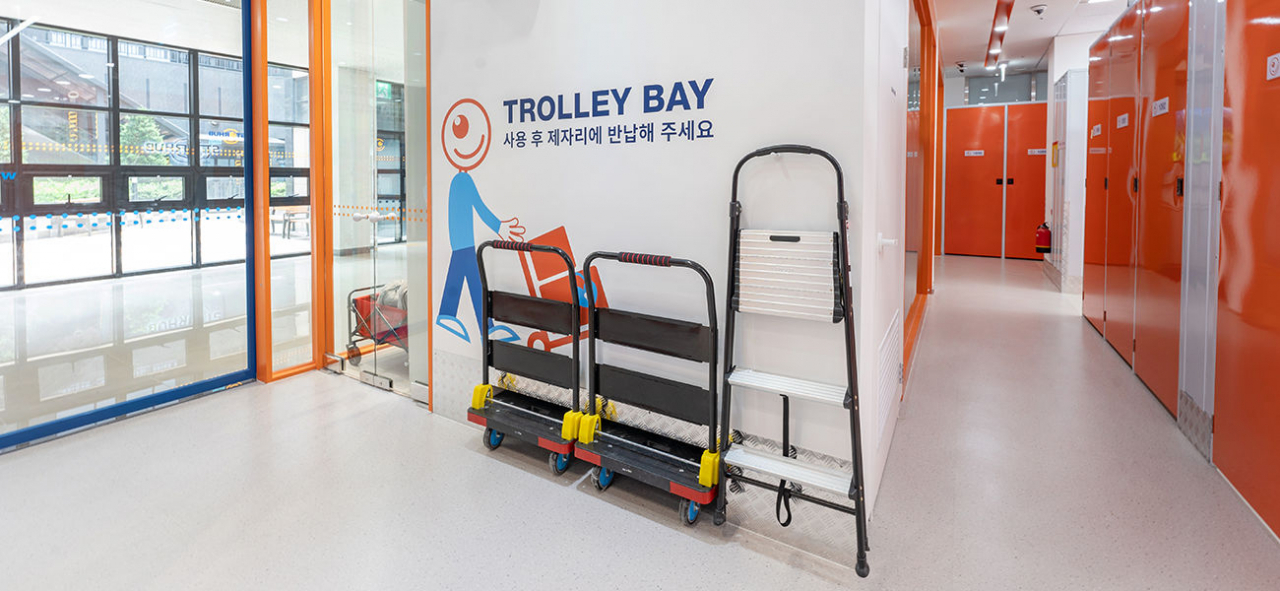 |
(123rf) |
The sense of constriction has become more palpable for Kim Min-hyung, a 30-something office worker in Seoul, as his belongings have piled up in his studio apartment over time.
While buying a closet might be a straightforward and conventional solution, it carries the risk of further reducing his already confined living space. So Kim is contemplating using a self-storage service.
"While renting a storage unit may appear unnecessary, I believe it's a sensible option considering Seoul's inflated housing costs," Kim said.
Single urban dwellers like Kim are driving the rise of personal storage rental services in South Korea today, reflecting a shift in perspectives and lifestyle choices away from the traditional priority placed on house upgrades.
According to Jones Lang LaSalle, a real estate and investment management firm, the number of self-storage facilities jumped about 54 percent on-year in 2022, totaling around 300 nationwide.
Seoul accounts for approximately 53 percent of the total, with 30.4 percent and 7.8 percent located in Gyeonggi Province and the Greater Busan area, respectively.
Lobo Jeong, an official at DaLock -- the largest storage operator in Korea with the most number of storage facilities under management -- said the local market has been doubling in size annually over the past three years.
 |
DaLock's self-storage facility in Seoul (Courtesy of DaLock) |
Small homes, large possessions
Data shows that Koreans, especially city dwellers, have smaller living quarters per person compared to the US and even Japan.
According to data released by the Ministry of Land, Infrastructure and Transport, Korea’s housing space per person on average came to approximately 33.9 square meters as of 2021, lower than that of neighboring Japan (40.2 square meters) and of the US (65 square meters).
In particular, Greater Seoul had recorded a lower average of 31.4 square meters.
"Over 90 percent of users utilize the service for personal reasons, with individuals in their 30s and 40s comprising approximately 60 percent, followed by 25 percent in their 20s," said Jeong from DaLock. He pointed out that the number of users in their 20s are on a steady rise.
In a similar manner, the JLL report pointed to the increased number of single-person households as a primary factor behind the storage service market's upward trend.
Single dwellers, facing constraints in both financial and spatial aspects, are increasingly inclined to opt for subscription-based services through which they “rent specific-sized spaces based on their needs instead of owning large living spaces,” as they prioritize “convenience and experience rather than ownership,” the report stated.
Lee Hee-chung, a professor of urban science at the University of Seoul, suggests that self-storage services enable solo dwellers, particularly the younger demographic, to effectively partition their living space from storage areas.
“It becomes a wise option in a sense that they can make the most of their limited living space,” Lee said.
Yet, navigating confined spaces is not the sole concern of individuals in one-person households.
The country's extreme winter and summer climates present a challenge for families. Essential winter items such as duvets, heaters, winter clothing and winter sports gear are stored for the majority of the year, only to be brought out when the winter season arrives.
In an online community of skiers and snowboarders on Naver, an anonymous user shared his experience of acquiring a dedicated space to store a wide array of gear and equipment related to camping, skiing, and bicycles, with the goal of expanding his family living space. This decision proved to be well judged, as it allowed him to declutter his home and create a more organized living environment.
"I've run out of space to stash equipment for my leisure activities," the poster remarked. One comment likened the new rental space to a treasure trove where his favorite gear is located. Another comment stated, "Your house must have become really spacious.”
 |
Storehub's self-storage facility in Seoul (Courtesy of Storehub) |
Outlook for localized services
Becoming a common presence in urban neighborhoods, self-storage establishments near residential areas are easy to spot. According to Jeong, this can be attributed to the emergence of self-storage businesses that cater to urban residents.
“In contrast to the US and Japan, which mostly offer outdoor self-storage services, South Korea prioritizes indoor solutions tailored to the nation's urban residential landscape and real estate environment. This design allows people to easily access and utilize the services in close proximity," explained Jeong.
The JLL report reiterated this perspective, noting that countries with expansive geography view storage services as "leasing warehouses" on the outskirts of cities with affordable rental fees. By stark contast, Korean storage service centers are integrated into residential and commercial districts.
The rapid expansion of the storage market can also be linked to the incorporation of digital technology, which aims to enhance user experience and convenience.
The market is anticipated to thrive with the rapid advancement of mobile digital technology, coupled with an automated system overseeing storage facilities around the clock, ensuring an optimal environment for items, industry insiders emphasized.
In the realm of the nation's real estate sector, professor Lee offers a buoyant perspective on the future of the self-storage market.
“It seems likely that the demand for conventional office space will gradually wane, with the increased prevalence of remote working in the post-pandemic era,” Lee said. “This shift will lead to higher vacancy rates within buildings, potentially opening up more opportunities for storage businesses to enter.”
Nonetheless, while the appeal of obtaining a new personal storage space seems compelling, there could be certain challenges and setbacks.
Lee emphasized the need for self-storage businesses to adopt innovative storage solutions to address the possible oversupply situation in the future, where the availability of storage facilities exceeds demand.
"An upsurge in storage services might result in them employing identical business models ousted from the sector," he said.
For potential customers, the cost of self-storage rentals can be a significant deterrent to using the service.
Rental fees for storage spaces vary depending on the size and type of unit, ranging from 10,000 won to 340,000 won ($7.60-$259) per month. Location also plays a role in determining the price.
DaLock, for instance, charges a monthly fee of around 80,000-100,000 won for its cubic meter units in Seoul, while Storehub, a Singapore-based self-storage operator, rents a small unit -- measuring about 1-1.9 square meters in area and 2.4-2.7 meters in height -- for 90,000 won per month.
In light of this, Kim stated that he will conduct a thorough cost-benefit analysis for renting private storage spaces.
“I remain undecided on whether to use a storage system,” Kim said. “I will take into account various factors like the location and price to find the facility that best suits my needs,” he added.







![[Today’s K-pop] Blackpink’s Jennie, Lisa invited to Coachella as solo acts](http://res.heraldm.com/phpwas/restmb_idxmake.php?idx=644&simg=/content/image/2024/11/21/20241121050099_0.jpg)